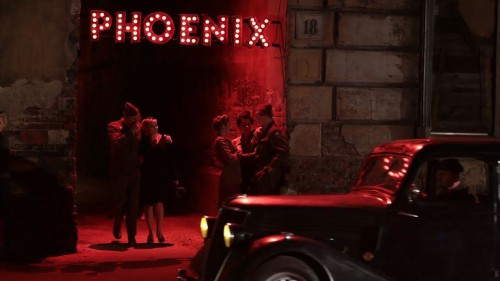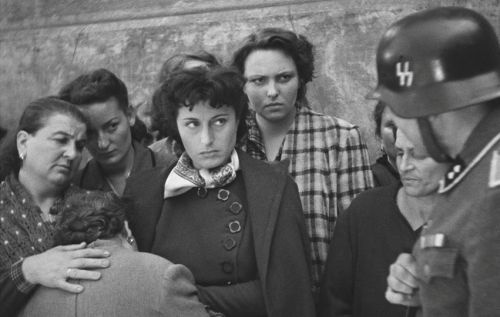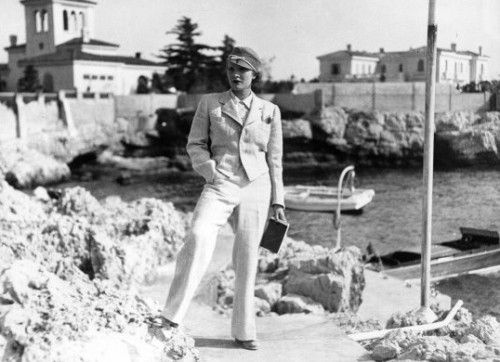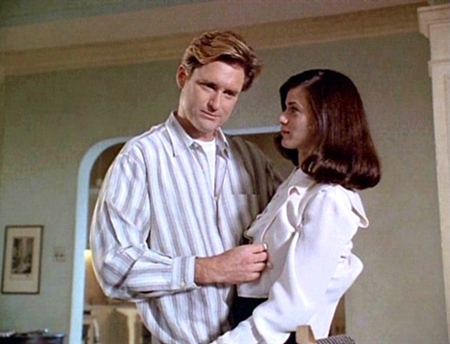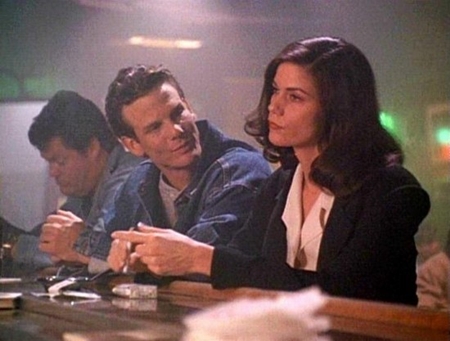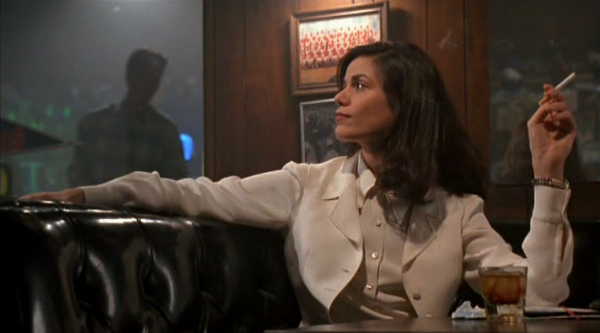Guest post written by Josh J. Bell.
[Trigger warning: discussion of rape and sexual assault]
Eva Green is possibly my favorite dramatic performer on the planet. Her striking presence and physicality, that raspy, compelling voice, her often unhinged acting style; she has an amazing talent for raising the entertainment value of anything she’s involved in. Just watch Penny Dreadful, which featured a 10-minute long séance scene: 10 straight minutes of Green writhing around, babbling in weird voices, and somehow it never once becomes tedious. The woman is one of the major unappreciated MVPs of the film industry right now.
Even when Green chooses to take part in obviously bad movies, she somehow manages to carry them to a higher level of quality all on her own. Such is the case with two of her films I’d like to compare and discuss: 300: Rise of an Empire and Sin City: A Dame to Kill For.
Sin City and 300 have strangely parallel trajectories as franchises. Both are based on graphic novels written by Frank Miller; both were released in the mid-2000s, and were highly accurate to the source material, recreating panels from the graphic novels down to the tiniest details. Both are post-modern takes on classic film genres no longer very popular at the both office: film noir and sword and sandal historical epics. Both were highly stylized with slow-motion violence and sex, distinctive color-palettes, and heavy use of CGI sets. And finally, both franchises released sequels in 2014, both of which starred Eva Green in major femme fatale roles, and both of which feel, in part, like pro-feminist reactions to the original films they follow. If that all is coincidence, it has to be one of the most stunning series of coincidences in Hollywood history.
Now, Frank Miller is many things but no one would ever describe him as a feminist. He is notorious for writing female characters who are highly sexualized, possess little to no story agency, and usually have some cruel and humiliating violence or death inflicted upon them. In short, he’s about as old school and outspoken a misogynist as you can be and still remain employable in the comics industry (which says more about the industry than it does him, but that’s another essay entirely).
The original Sin City and 300 films did little to remove or minimize Miller’s lack of respect for his female characters. Women such as Queen Gorgo (Lena Headey) and Gail (Rosario Dawson) were allowed to be powerful only through their sexuality and violence; they remained passive supporters of their male counterparts’ storylines. The remaining female characters were used merely for window dressing and cannon fodder.
The sequels, flawed as they may be, diverge from their origin films. While Frank Miller has claimed to have a 300 prequel in the works for years, it, like many of his proposed projects over the last few decades, has yet to materialize. Unwilling to wait on the increasingly irrelevant writer, Warner Brothers pushed ahead, and the resulting film was instead written by the first film’s director, Zack Snyder, with Miller’s only contribution being whatever he actually finished of that prequel comic serving as inspiration.
Snyder’s history with writing female characters and feminist ideas into his screenplays is… inconsistent, to say the least. He strikes me as someone who has at least a passing interest and respect for feminism, but isn’t really particularly dedicated to it. When looking at 300: Rise of an Empire and Snyder’s even more controversial Sucker Punch, it’s hard to deny that he isn’t at least making an effort to write an empowering story for women. But most of his films (300, Watchmen, Batman v Superman: Dawn of Justice) ignore the handful of women characters, often seeming annoyed by or even outright hostile to their presence.
Despite the fact that I have yet to fully forgive him for Batman v Superman, I generally try to cut Snyder some slack, because he a) is genuinely talented, and b) does usually seem to learn from his mistakes, however slowly. Case in point, 300: Rise of an Empire, which comes across as almost a response to or apology for the previous film. The film’s protagonist, the Athenian Themistokles (Sullivan Stapleton), takes a rather dim view of the brutality of the Spartans, as evidenced by a needlessly long scene of a group of Spartans brutally beating one guy during training. Perhaps this was Snyder’s way of addressing the accusations toward 300 that he was promoting fascism and eugenics, not to mention the first film’s racism and ableism. Also, Queen Gorgo is given far more screen time and more to do, including leading a Spartan army to battle, and none of which involves seducing her husband’s rivals for political favor. Now if only Snyder had thought to include a positive queer character as recompense for the blatant and historically inaccurate homophobia of the first film.
But as with seemingly every project she appears in, this is Eva Green’s stage, and the really interesting stuff begins and ends with her. Green plays Artemisia, very loosely based on a real historical figure of the same name. Despite being the villain, she is the true star of the film, and director Noam Murro knows it. The camera often lingers on Green during long pauses, allowing some truly stellar acting moments, even though whenever she’s absent, the film could care less about acting, preferring to keep a kinetic pace from one gratuitous image of violence and sexuality to the next.
Green is nothing short of transcendent in this role, one she’s honestly overqualified for, but Snyder doesn’t exactly leave her with nothing to work with either. Artemisia’s arc is fascinating to analyze and casts the entire film in a different light when viewed up close.
Artemisia is not only the chief villain, completely overshadowing Xerxes (Rodrigo Santoro), but she is retroactively cast as the true mastermind behind the events of the previous film as well. We are shown that in fact Artemisia is the true power behind the Persian throne, with Xerxes being little more than a puppet ruler she manipulated into invading Greece, even being responsible for his delusions of godhood. As much as I normally hate retcons (see Spectre for the worst example of the hackneyed “secret villain responsible for literally everything” trope), it’s noteworthy that Snyder not only gives Artemisia agency, but in fact makes her responsible for the inciting events of the entire franchise. Without Artemisia, there is no 300.
Artemisia’s backstory and motivation are even more interesting. As a child, she was captured by Greek soldiers who raped and murdered her family in front of her, and then kept her as a sex slave for years before discarding her half-dead in the streets. She is then found by a Persian ambassador (Peter Mensah), who took her in and trained her in combat and strategy. From there she rose through the ranks until she was the most trusted advisor to the Persian King Darius (Igal Naor), favored even above his son Xerxes, and leader of the entire Persian Navy.
Rape as a backstory for violent, vengeful, strong, or ambitious female characters is one of the most overdone plots in modern fiction, let’s admit that right now. It is ridiculous how writers behave as though the only justification or motivation a woman can have for revenge is rape and sexual assault. So Snyder wins no points for dipping into this dry well and employing this trope. However, normally the rape-revenge heroine is a… well, heroine. Rape is a horrific crime; it’s difficult to watch on-screen and is often triggering to survivors, so filmmakers don’t tend to subject characters to that kind of traumatic ordeal on-screen if we’re not meant to empathize with them.
Eva Green’s performance combined with this backstory makes Artemisia by far the most three-dimensional character in either 300 or its sequel (although that’s not saying much). As a result, she’s far easier to identify with and root for than the bland and lifeless Themistokles, who is little more than a Leonidas clone, and Sullivan Stapleton as an actor is so massively out of his league next to Green that it’s laughable. The film’s divisive, aggressive sex scene between them is interesting and over the top all at once, and while the scene’s merits are debatable — whether it sexualizes a rape survivor, empowers her, or both — it’s hard to deny Green owns the whole scene, even if only by virtue of her being a far superior actor than Stapleton.
In the finale, Artemisia and Themistokles face off in an epic sword fight, during which Green delivers one of the all-time great insults (“You fight harder than you fuck!”), which finally culminates in her death at the point of Themistokles’s sword. Now this by itself might be a coincidence, swords are phallic instruments by default and not every movie featuring swordplay is trying to say anything symbolically about sex or gender dynamics. But when the sword goes right into Artemisia’s midsection and she forces it deeper into her, almost seeming to orgasm at the feeling of it, and then falls to the ground in a position mirroring that which her captors left her for dead as a child, while Themistokles (whose appearance looks similar to the hoplites who killed her family) stands over her, there’s no way to argue that this scene isn’t inviting direct comparison to Artemesia’s origin story.
There are two ways to interpret this. One is that 300: Rise of an Empire is a violently misogynist movie that vilifies a rape survivor and sees the symbolic rape of her demise as just punishment for her sin of being an ambitious woman. That’s an extreme view, but given our country just elected a racist misogynist who bragged about sexual assault over a potential first woman POTUS, it certainly is still possible for that level of hate to exist in our movies. However, I choose to believe that the film actually subtly condemns our supposed hero, encouraging you to root for the villain and reexamine the sexist roots of the macho power fantasy the first film provided. When the final shot of the film is Themistokles coming right at the camera like a horror movie monster, in fact just like the sea serpent that comes right at the camera during a random dream sequence that otherwise has no clear purpose, it’s not unreasonable to interpret this as a sign that maybe he isn’t really the good guy.
Sin City: A Dame to Kill For is far less complex and subtle than 300: Rise of an Empire, and as such, is a little harder to find meaning in. It also differs in that Frank Miller clearly had much more influence in the film adaptation. Not only does he once again have a co-directing credit, but he is the only credited writer this time around. However, like Snyder, I think that Miller’s attitude towards women, while clearly outdated and hateful, might be just a bit more complex than he usually lets on. Once again, parts of this film feel like they’re responding to backlash against the first film.
The most obvious example in the final chapter in the film’s anthology, “Nancy’s Last Dance,” in which Nancy Callahan (Jessica Alba), a passive Damsel in Distress in the last film, is transformed into an unstable, Travis Bickle-esque vigilante. She manages to finally kill off Roarke (Powers Boothe), the big bad of the franchise, which no one ever managed before. It’s not really a good story, Alba just isn’t a strong enough actress to believably pull it off and it renders Hartigan’s (Bruce Willis) sacrifice at the end of the last movie pointless. Killing off Roarke seems like it defeats the point of the Sin City series, where the bad guys always win and the best the good guys can do is ruffle their feathers a bit on the way to the grave. But still, it’s an unexpected place for Miller to take this story.
But once again, Eva Green steals the show; these films live and die on her shoulders. There isn’t really much to unpack with her character compared to 300: Rise of an Empire. Ava Lord (Eva Green) is a pretty standard femme fatale: duplicitous, amoral, using her sexuality to manipulate men into doing her bidding. She does mirror Artemisia a bit, in that both women are sick of living at the whim of men and acquire power through seduction. But Ava has no tragic backstory to motivate her, and in fact, all her claims about being abused are merely lies to garner sympathy (which is incredibly problematic). But I’m a firm believer that even monstrously evil female characters in fiction can be a positive thing if they provide a wider range of roles for actresses; and nobody does bad quite like Eva Green. She dominates this movie so much, it’s no wonder she’s the character the film’s title references. Ava Lord is almost like a slasher villain, in that she’s so much more interesting and fun to watch than her victims; you find yourself rooting for her despite the depths of her evil.
Neither of these films, 300: Rise of an Empire and Sin City: A Dame to Kill For, are particularly good, if I’m being honest. The plots are poorly structured, they both feel a little phoned in, the aesthetics have long lost their novelty since the originals came out, and Green is (in both cases) surrounded by castmates who either aren’t nearly on her level, or simply can’t be bothered to put in the same effort. Neither film is feminist, since — with the exception of the last ten minutes of Sin City: A Dame to Kill For — neither have any actual female protagonists, with the women (aside from Nancy) instead serving as adversaries or supporting players to the men. But it’s a testament to Eva Green’s abilities that she steals so many scenes that you forget the film isn’t actually about her.
I like to recognize effort where I see it, and despite all their failings, there is effort in these films. Snyder and Miller are far from my favorite writers, but there is the faintest scent of self-examination in these scripts that is encouraging. Maybe their treatment of female characters will improve further in time; maybe it won’t. In the meantime, we still have Eva Green. And there is never a bad time to celebrate Eva Green.
See also at Bitch Flicks:
Eva Green’s Artemisia Disappoints in 300: Rise of an Empire
Sin City: A Dame to Kill For Review
Josh J. Bell is a freelance blogger and stage actor from Charleston, South Carolina. He has written for The Escapist and The Agony Booth. Follow him on Twitter @joshjbell.














